Fire Officer
30+ Fire Officer Interview Questions and Answers
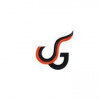
Asked in Steel Strips Wheels

Q. What is the purpose of using a Crase fire tender in a specific area?
A Crase fire tender is used for efficient water supply and firefighting support in specific areas during emergencies.
Provides a reliable water source for firefighting operations in remote areas.
Equipped with pumps and hoses to quickly deploy water where needed.
Can be used in wildland firefighting to combat brush and forest fires.
Facilitates rapid response in urban settings where hydrants may be insufficient.

Asked in Ayushman Hospital & Health Services

Q. What are the different types of firefighting methods?
Different types of firefighting methods include direct attack, indirect attack, combination attack, and exposure protection.
Direct attack involves applying water directly to the fire to extinguish it.
Indirect attack involves creating a fire break to control the fire's spread.
Combination attack combines elements of both direct and indirect attacks.
Exposure protection focuses on preventing the fire from spreading to nearby structures or areas.
Fire Officer Interview Questions and Answers for Freshers
Asked in YG Estates Facilities Management

Q. What are the responsibilities of a Fire Safety Officer?
The Fire Safety Officer is responsible for ensuring compliance with fire safety regulations and implementing measures to prevent and respond to fires.
Ensuring compliance with fire safety regulations
Implementing fire prevention measures
Developing and implementing emergency response plans
Conducting fire safety inspections and drills
Training staff on fire safety procedures

Asked in JLL

Q. What are the roles and responsibilities in fire safety?
Fire safety roles and responsibilities involve preventing, preparing for, and responding to fires to protect lives and property.
Preventing fires through education, inspections, and enforcement of fire codes
Preparing for fires by conducting drills, maintaining equipment, and developing emergency response plans
Responding to fires by extinguishing them, rescuing individuals, and providing medical assistance
Training others on fire safety procedures and protocols
Investigating the ...read more

Asked in Deccan sales and Service

Q. What' is tha fire and how many extinguiser of fire fighting
Fire is a rapid chemical reaction that releases heat, light, and various gases. The number of fire extinguishers needed depends on the size and type of fire hazards present.
Fire is a rapid chemical reaction that requires fuel, oxygen, and heat to sustain.
There are different classes of fires (A, B, C, D, and K) which require different types of fire extinguishers.
The number of fire extinguishers needed depends on the size and type of fire hazards present in a building or area.
I...read more

Asked in Sify Technologies

Q. What is the recommended distance between two smoke detectors?
The distance between two smoke detectors depends on the manufacturer's recommendations and the layout of the building.
The National Fire Protection Association (NFPA) recommends smoke detectors be installed in every bedroom, outside each sleeping area, and on every level of the home.
The distance between smoke detectors should not exceed 30 feet.
The layout of the building, such as the presence of walls or obstructions, may affect the placement of smoke detectors.
Consult the man...read more
Fire Officer Jobs
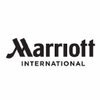
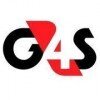

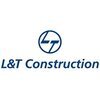
Asked in L&T Construction

Q. What are the different types of fire extinguishers?
Fire extinguishers are categorized based on the type of fire they are designed to combat, including water, foam, and dry chemical types.
Class A: For ordinary combustibles like wood and paper (e.g., water extinguishers).
Class B: For flammable liquids such as gasoline and oil (e.g., foam extinguishers).
Class C: For electrical fires (e.g., CO2 extinguishers).
Class D: For combustible metals like magnesium (e.g., dry powder extinguishers).
Class K: For cooking oils and fats (e.g., ...read more

Asked in Mahindra & Mahindra

Q. In the event of a fire, what actions would you take?
In case of a fire, I would immediately assess the situation, ensure the safety of individuals, coordinate with the fire department, and implement appropriate firefighting strategies.
Assess the situation to determine the size and severity of the fire
Ensure the safety of individuals by evacuating them from the affected area
Coordinate with the fire department by providing them with accurate information
Implement appropriate firefighting strategies based on the nature of the fire
U...read more
Share interview questions and help millions of jobseekers 🌟


Asked in Ayushman Hospital & Health Services

Q. What is your emergency plan for fire situations?
My emergency plan for fire situations includes evacuation procedures, communication protocols, and regular fire drills.
Establish clear evacuation routes and meeting points
Ensure all staff are trained in fire safety procedures
Regularly conduct fire drills to practice emergency response
Maintain communication with emergency services and update contact information regularly

Asked in Steel Strips Wheels

Q. What is the pressure of the hydrant line?
Hydrant line pressure varies, typically ranging from 20 to 100 psi, depending on system design and location.
Standard hydrant pressure is usually between 20 to 100 psi.
Pressure can be affected by factors like water demand and pipe size.
For example, a fire hydrant in a residential area may have lower pressure than one in a commercial zone.
Hydrant flow tests can determine the exact pressure and flow rate available.

Asked in JLL

Q. What are the different types of EHS and fire safety audits?
Different types of EHS and fire safety audits include compliance audits, management system audits, and process safety audits.
Compliance audits focus on ensuring compliance with laws and regulations related to EHS and fire safety.
Management system audits assess the effectiveness of an organization's EHS and fire safety management systems.
Process safety audits evaluate the safety of specific processes or operations within an organization.
Examples: OSHA compliance audit, ISO 140...read more
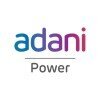
Asked in Adani Power

Q. What is mvws What is hvws What is the fire What is class of fire according to nfps
MVWS and HVWS are water-based fire suppression systems. Fire is a chemical reaction that releases heat, light, and various gases. NFPA classifies fires into five categories based on the fuel involved.
MVWS stands for Medium Velocity Water Spray system, which is used to extinguish fires in areas with high ceilings or large open spaces.
HVWS stands for High Velocity Water Spray system, which is used to extinguish fires in areas with high heat release rates or where flammable liqu...read more

Asked in Tata Steel

Q. Definition of cumbustable material and flammable material
Combustible materials can catch fire and burn easily, while flammable materials have a lower flash point and can ignite quickly.
Combustible materials have a higher flash point than flammable materials
Flammable materials ignite easily and burn rapidly
Examples of combustible materials: wood, paper, cloth
Examples of flammable materials: gasoline, alcohol, propane
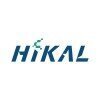
Asked in Hikal

Q. What are the elements of fire?
Fire elements refer to the components necessary for a fire to occur, including fuel, heat, oxygen, and a chemical chain reaction.
Fuel: Any material that can burn, such as wood, paper, or gasoline.
Heat: The energy needed to raise the temperature of the fuel to its ignition point.
Oxygen: The presence of oxygen in the air allows the fire to burn.
Chemical chain reaction: The process by which the fuel is broken down and releases energy in the form of heat and light.

Asked in JLL

Q. How do you maintain water pressure?
Maintaining water pressure involves regular system checks, adjustments, and ensuring proper equipment functionality.
Regularly inspect and maintain pumps to ensure they are functioning optimally.
Check for leaks in the system, as they can significantly reduce water pressure.
Adjust pressure regulators to maintain desired pressure levels.
Ensure that water supply sources are adequate and not restricted.
Use pressure gauges to monitor and assess pressure levels regularly.
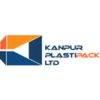
Asked in Kanpur Plastipack

Q. How do you control a fire?
To control a fire, one must use various firefighting techniques and equipment to extinguish the flames and prevent further spread.
Use fire extinguishers to put out small fires
Deploy fire hoses and water to extinguish larger fires
Create fire breaks to prevent the spread of wildfires
Utilize fire blankets to smother flames
Evacuate people from the area to ensure safety

Q. How many types of BA sets are there?
There are two types of BA sets: open-circuit and closed-circuit.
BA stands for Breathing Apparatus.
Open-circuit BA sets supply fresh air from a cylinder and release exhaled air into the environment.
Closed-circuit BA sets recycle exhaled air and remove carbon dioxide before supplying it back to the user.
Examples of BA sets include SCBA (Self-Contained Breathing Apparatus) and EEBD (Emergency Escape Breathing Device).
Asked in Inbrew Beverages

Q. How many types of fire are there?
There are 5 types of fire: Class A, Class B, Class C, Class D, and Class K.
Class A fires involve ordinary combustibles like wood, paper, or cloth.
Class B fires involve flammable liquids or gases like gasoline or propane.
Class C fires involve electrical equipment like appliances or wiring.
Class D fires involve combustible metals like magnesium or titanium.
Class K fires involve cooking oils and fats in commercial kitchens.

Asked in Hikal

Q. What is the fire tetrahedron?
The fire Tetrahedron is a model that illustrates the four elements necessary for a fire to occur: fuel, heat, oxygen, and a chemical chain reaction.
Fuel: any material that can burn, such as wood, paper, or gasoline
Heat: the energy needed to raise the temperature of the fuel to its ignition point
Oxygen: the presence of oxygen in the air that supports combustion
Chemical chain reaction: a process where the heat produced by the fire sustains the reaction and allows it to continue

Asked in JLL

Q. How do you coordinate with the ERT?
Coordination with ERT involves clear communication, mutual respect, and understanding of roles and responsibilities.
Establish clear communication channels with ERT members
Regularly conduct joint training exercises to improve coordination
Develop mutual respect for each other's expertise and capabilities
Understand each other's roles and responsibilities in emergency situations
Create a unified command structure to streamline decision-making processes
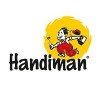
Asked in Handiman Services

Q. Tell me about your experience conducting fire drills.
Fire drills are essential for ensuring safety and preparedness in case of a fire emergency.
Establish a clear evacuation plan and communicate it to all personnel.
Conduct regular fire drills to familiarize everyone with the procedures.
Use realistic scenarios to simulate different types of fire emergencies.
Evaluate the effectiveness of the drill and gather feedback for improvement.
Ensure all exits are accessible and marked clearly during the drill.

Asked in Tata Steel

Q. What is gas suspension system
A gas suspension system is a type of fire suppression system that uses inert gases to extinguish fires by reducing the oxygen concentration in the protected area.
Uses inert gases to suppress fires
Reduces oxygen concentration in the protected area
Commonly used in data centers, museums, and archives

Asked in TCS

Q. Class of Fire class of Eupament
The class of fire for Eupament is not a recognized classification.
Eupament is not a recognized substance for fire classification
Fire classes are typically classified as A, B, C, D, or K
It is important for fire officers to be familiar with fire classifications to properly respond to fires
Asked in AvenueCorp

Q. What is the fire triangle?
The fire triangle consists of three elements: heat, fuel, and oxygen, which are essential for fire to ignite and sustain.
Heat: The energy source that raises the material to its ignition temperature (e.g., a spark or flame).
Fuel: Any combustible material that can burn (e.g., wood, paper, gasoline).
Oxygen: A gas that supports combustion, typically from the air, which contains about 21% oxygen.

Asked in India Japan Lighting

Q. What is safety and
Safety is the practice of preventing accidents, injuries, and other potential hazards in order to protect individuals and property.
Safety involves identifying and assessing risks in order to implement measures to mitigate them.
It includes providing proper training and equipment to ensure the well-being of individuals.
Safety protocols should be regularly reviewed and updated to address new risks and challenges.
Examples of safety measures include wearing personal protective equ...read more

Asked in L&T Construction

Q. What is safety?
Safety is the state of being protected from harm, danger, or injury.
Safety involves identifying and assessing potential hazards
Taking measures to eliminate or minimize those hazards
Providing protective equipment and training to prevent accidents
Creating a culture of safety through communication and education
Examples include wearing a seatbelt while driving, using protective gear in hazardous work environments, and following safety protocols in emergency situations

Asked in Hikal

Q. Types of classification
Types of classification include hierarchical, binary, and multi-class.
Hierarchical classification involves organizing categories into a tree-like structure.
Binary classification involves categorizing data into two classes.
Multi-class classification involves categorizing data into more than two classes.
Asked in Drishti Group

Q. What is the emergency plan?
The emergency plan is a detailed strategy outlining procedures to follow in case of emergencies to ensure the safety of individuals and property.
The emergency plan should include protocols for different types of emergencies such as fires, natural disasters, medical emergencies, etc.
It should outline evacuation routes, designated meeting points, and communication procedures.
The plan should designate roles and responsibilities for staff members during emergencies.
Regular traini...read more

Asked in Infosys

Q. building sistem work
Building systems refer to the various components and subsystems that make up a building's infrastructure.
Building systems include HVAC (heating, ventilation, and air conditioning), plumbing, electrical, and fire protection systems.
These systems work together to ensure the safety, comfort, and functionality of a building.
For example, the HVAC system regulates the temperature and air quality, while the fire protection system includes sprinklers and alarms to detect and respond ...read more

Asked in Hikal

Q. What is tetrahedron
A tetrahedron is a polyhedron with four triangular faces, six straight edges, and four vertex corners.
A tetrahedron is a three-dimensional shape.
It is made up of four equilateral triangles.
It has a total of six edges and four vertices.
Examples of tetrahedrons include pyramids and certain molecular structures.
Interview Questions of Similar Designations
Interview Experiences of Popular Companies








Reviews
Interviews
Salaries
Users

















